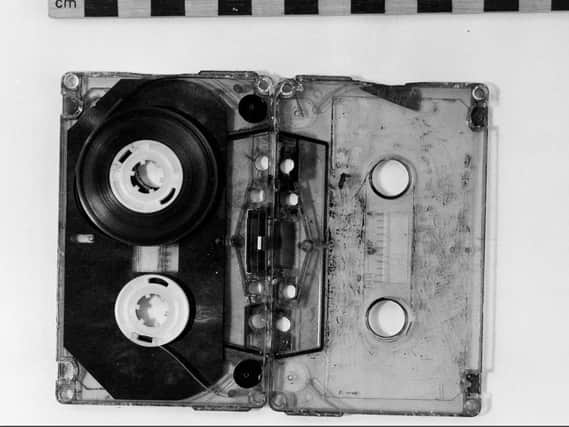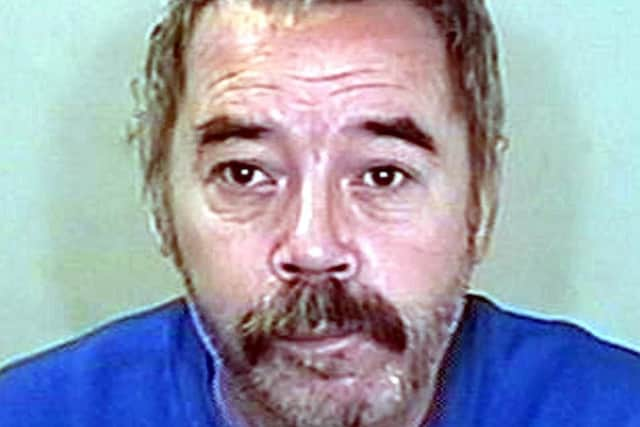Wearside Jack: The web of deception which spread from a Sunderland post box and a cassette tape from Woolworths in Fawcett Street


As the BBC prepares to air a new documentary looking at the case, we revisit John Humble's actions which threw police off the chase of the real killer Peter Sutcliffe
Driven by his interest in the case of the Victorian serial killer Jack the Ripper, Humble came up with the idea of sending the letters while sitting at home alone in the Hylton Lane Estate.


Advertisement
Hide AdAdvertisement
Hide AdThe first was posted from the post box on Hylton Road in March 1978 and was addressed to head of the Ripper Squad, Assistant Chief Constable George Oldfield.
Related: 'You have blood on your hands' - when the Yorkshire Ripper wrote to Wearside Jack in prison
When there was no reaction to the letter in newspaper or on television, Humble decided to bypass the police and go straight to the media.
Using his knowledge of the original Jack the Ripper case, he started work on his second letter – this time to the Daily Mirror newspaper.
Advertisement
Hide AdAdvertisement
Hide AdIn each letter he posted, he signed the inside of the envelope flap "Jack the Ripper", so the recipient would know who he was when opening the envelopes.
But a year passed after he sent the second letter, and still no attention, so in March 1979 he wrote his final letter.
After that, he decided to make a tape using his brother's recorder and a cassette he bought from Woolworths in Fawcett Street, Sunderland.
Advertisement
Hide AdAdvertisement
Hide AdEventually it would be played to millions of television viewers across the country.
The hoax sent police on the biggest wild goose chase in British criminal history as detectives switched their investigations to Sunderland.
All the letters were stamped with a Sunderland postmark, and officers pinpointed the accent on the tape down to the Castletown area of the city.
"I'm Jack," said the voice. "I see you are still having no luck catching me."
Advertisement
Hide AdAdvertisement
Hide AdThe tape was heard in 15million homes across the UK, with headlines in the Sunderland Echo proclaiming: "Ripper is a Wear Man".In the previous four years the Ripper had brutally murdered 10 women in Leeds, Bradford, Manchester, Huddersfield, Halifax and Preston.
In an article published in the Echo on June 27, 1979, Mr Oldfield stated: "I acknowledge that there is a possibility that this is a hoax, but there are factors in the letters that I have received that make me believe that the man who wrote the letters can only be the man known as the Ripper."
Police were convinced of the tape's authenticity for a number of reasons. First, detectives had already received letters from the sender of the tape.
More importantly, "Jack" seemed to know more about the killings than had been made public.
But some detectives in Sunderland were not convinced.
'Letters could simply have been taken from media reports'
Advertisement
Hide AdAdvertisement
Hide AdAfter studying newspaper articles written about the inquiry, police believe anything contained in the letters could have simply been taken from the media reports.
Between June 1979 and January 1981, Detective Inspector David Zackrisson helped lead the Sunderland hunt for "Jack".
He spoke to the Echo in 2006 after justice finally caught up with John Humble, who was then aged 50.
He said: "On hearing of Humble's arrest, I felt a terrific sense of relief.
Advertisement
Hide AdAdvertisement
Hide Ad"It was strange, because this was a man I thought would elude justice for the rest of his life – and my life – but he had finally been caught and identified by West Yorkshire Police."
Mr Zackrisson, a former chief superintendent in Newcastle, said that throughout his subsequent career and retirement he had always hoped that the hoaxer would be unmasked.
He said: "Even in retirement, it was very difficult to get away from what happened. There were so many theories flying around.
"I was worried. Suspicions that it was a police officer behind the hoax was something that could have hung over the force for years.
Advertisement
Hide AdAdvertisement
Hide Ad"Even after many people had forgotten about it, it was investigative journalist Patrick Lavelle who kept pushing for answers
"His involvement meant that no stone was left unturned in his determination to unmask the hoaxer."
Assistant Chief Constable George Oldfield, who led the entire Yorkshire Ripper inquiry, died of a heart attack a few years after Peter Sutcliffe was caught.
Colleagues say the stress brought on by the investigation took its toll. Mr Zackrisson told the Echo in 2006 he would now be able to get on with life.
Advertisement
Hide AdAdvertisement
Hide AdHe added: "(It) has clarified the situation for everyone. There were many, many people, not least the victims and their families, who were anxious to see John Humble get his just deserts.
"This has been a rare case but I only hope some lessons have been learned."